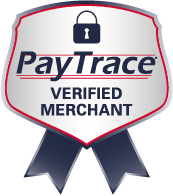By some measures, more than one-quarter of all social consumers feel that social advertising has worsened their user experience. To some degree, this makes sense: increased advertising dilutes the amount of organic content those users are viewing at any one time. At the same time, however, social networks need to monetize themselves to remain viable, and sponsored ads have proven to be the most lucrative method of generating revenues.
Similarly, social advertising is very important to businesses. As social ads become more prevalent, businesses are realizing that they can use these cost-effective advertising spaces to drive website traffic, promote their own social presence, expanding their digital visibility and drive sales and revenues. But social advertising can be a slippery slope because of how consumers view these social ads. It’s easy for a social ad’s presentation to appear spammy or intrusive, and if many consumers have the same reaction to a given ad, it could ultimately cause more brand damage than promotion.
It’s important to craft social ad campaigns that don’t ruffle consumer feathers. As social advertising becomes more prevalent–particularly on Facebook, which is leading the charge of monetizing through paid advertisements–a clear understanding of best practices is starting to emerge. Here are some tips to create social campaigns that will encourage your company’s growth, instead of hindering it.
Target a Highly Refined Audience
Social networks are massive. The likelihood for most businesses is that their consumer base is present in very large amounts–so large, in fact, that it doesn’t pay to target a remotely broad audience. Even an extremely refined target audience is still likely to net you tens of thousands of prospective consumers, so there’s no risk of going too small with your campaign targeting. By contrast, social ad campaigns that go too broad will result in social users seeing ads that aren’t relevant to them. That’s highly likely to upset them and damage your brand.
Play it safe by targeting a highly refined audience. By doing so, you increase your odds of having consumers engage your ad, and you’re exposing your ad only to consumers who will likely find the advertising relevant. That’s the best way to take advantage of social ad opportunities.
Keep Text Content Low
Advertising on Twitter limits your word count considerably. On Facebook and other networks, though, you have a large space in which you can write advertising text. Tempting as it may be, this is a dangerous move for most companies. Consumers won’t be willing to devote their attentions to a large block of advertising text–it could ultimately drive them away instead of pulling them in. It’s fine to use text as part of your social advertising, but keep this text clear and concise–waste no words. Consumers will appreciate this, and they’ll be more willing to read your ad content in the first place.
Embrace Engaging Visuals
As useful as text can be in crafting a social ad, most campaigns are driven by the visual elements. Pictures, infographics, even video can draw significant engagement from consumers. Visual elements are likely to be the first thing that catches a social user’s eye, so it shouldn’t be integrated as an afterthought. The most successful social campaigns will use visual content as the centerpiece and build the rest of the ad around that eye-grabbing focal point. Visual features are a significant driver of both social engagement and overall mobile engagement, so this aspect of your social ad should not be taken lightly.
Social ad campaigns can be difficult to develop and manage, but the payoff is big for those who do it right. If you’re looking to promote your business through paid social advertising, contact DBC Digital to make sure you do things the right way.
Greg Sherwood is CEO of DBC Digital, a marketing agency based in Denver, Colorado. With over 30 years of marketing experience with traditional and inbound (internet) marketing, Greg helps mid-sized businesses get a better return on their marketing dollars.
You can reach Greg at (303) 357-5757 or at dbc@dbcdigital.com


